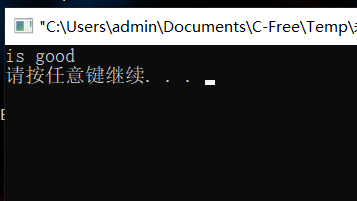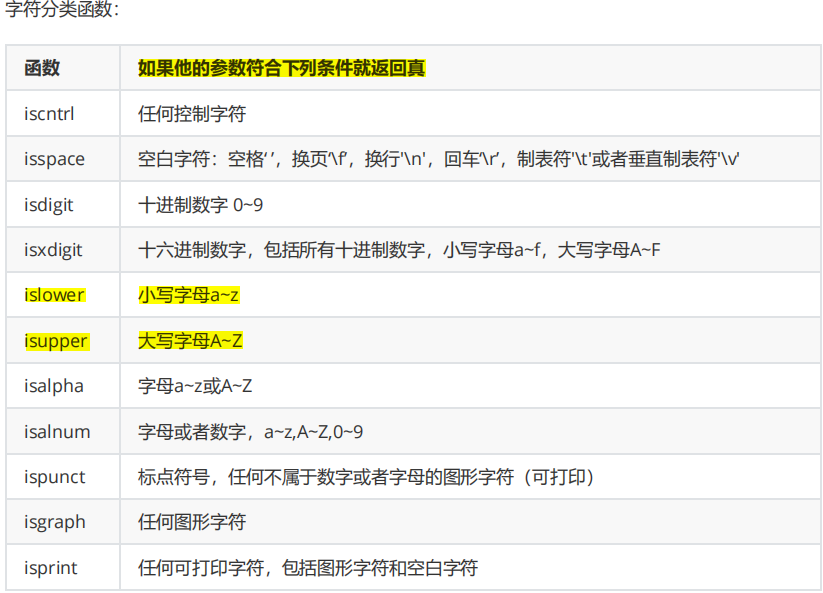This blog introduces some functions and how to simulate their implementation
strlen function
Introduction: calculate the length of the string str until the null end character, but excluding the null end character
Prototype: size_t strlen(const char *str)
Return value: returns the length of the string
Note:
1. The string ends with '\ 0'. strlen function returns the number of characters appearing before '\ 0' in the string (excluding '\ 0').
2. The string pointed to by the parameter must end with '\ 0'. Note that the return value of the function is size_t is unsigned.
Simulate the implementation of strlen function
Common recursive and pointer pointer methods
1. Recursion
#include<stdio.h>
//Recursive implementation / / recursion is nothing more than two-step initial conditions and approximation conditions
int my_strlen(char *str)
{
if(*str=='\0') //Returns 0 if the array is' \ 0 '
return 0;
else
return 1+my_strlen(str+1); //Not '\ 0 1 + pointer + 1 points to the next element
}
int main()
{
char arr[]="bite";
printf("%d",my_strlen(arr));
return 0;
}
2. Pointer pointer
Pointer pointer = number of elements in the middle of pointer
#include<stdio.h>
int my_strlen(char *str)
{
char*begin=str; //Record the initial position of the pointer
while(*str!='\0')
str++; //Loop record str to position before '\ 0'
return str - begin;
}
int main()
{
char arr[]="bite";
printf("%d",my_strlen(arr));
return 0;
}
strcpy function VS stcnpy function
Char * strcpy (char * DeST (receiving copied string), const char * src (copied string)) copies the string pointed by src to dest.

Simulate the implementation of strcpy function
#include<stdio.h>
int main()
{
char arr1[]="bite";
char arr2[10]={0}
char *dest=arr1; //Assign the first element of arr1 to the dest pointer
char *sec=arr2; //Assign the first element of arr2 to the sec pointer
while(*sec++=*dest++) // *Priority over++
{ //Assign 'b' to sec first
; //When it reaches' \ 0 ', it will be assigned to sec first and then judged, because when (' \ 0 ') is false, it will not be judged later
}
printf("%s",arr2);
return 0;
}
Char * strncpy (char * destination, const char * source, size_t Num) the difference is that strncpy can specify how many characters need to be copied

How to understand the second sentence
example
#pragma warning(disable : 4996)
#include<stdio.h>
#include<string.h>
int main()
{
char a[20] = "bite666666";
char b[] ="peng";
strncpy(a,b,6); //Copy the six characters in b to a. you can know that only five elements in b are less than num, so 0 will be added
return 0;
}

You can see that the sixth element a[5] is assigned as' \ 0 '
strcat VS strncat
char * strcat ( char * destination, const char * source )
Connect the score to the destination and add '\ 0' at the end of the score
be careful:

char * strncat ( char * destination, const char * source, size_t num );
Connect the num characters in the score after the destination and fill in '\ 0' at the end of the score
Simulate the implementation of strcat function
char *my_strcat(char *dest, const char*src)
{
char *ret = dest;
while(*dest)
{
dest++;
}
while(*dest++ = *src++)
{
;
}
return ret;
}
strcmp VS strncmp
The strcmp function compares two strings
Function prototype: int StrCmp (const char * STR1, const char * STR2)

Function prototype: int strncmp (const char * STR1, const char * STR2, size_t Num);
Compare the first n characters of the string
STR1 and STR2 are the two strings to be compared, and num is the number of characters to be compared

Simulated implementation of strcmp
Principle: the comparison of string size is determined by the order on the ASCII code table, which is also the value of characters
int my_strcmp(const char *str1,const char *str2)
{
while(str1 == str2) //If two characters are the same, + + backward ratio
{
if(str1=='\0' &&str2 =='\0')
return 0;
str1++;
str2++;
}
return *str1 -*str2; //The returned value is ASCII code. If * STR1 - * STR2 > 0, it means STR1 > STR2. On the contrary, STR1 < STR2
strstr function
Function: retrieves the position of the substring in the string for the first time
char * strstr ( const char *str1, const char * str2)
Check whether str2 appears in str1
Returns the address where the substring str2 first appears in the string str1; If no substring is retrieved, NULL is returned
#include<stdio.h>
#include<string.h>
int main()
{
char *str1 = "bite is good";
char *str2 = "is";
char *s = strstr(str1, str2);
printf("%s\n", s);
return 0;
}

Simulation implementation str
char* my_strstr(const char* str1, const char* str2)
{
assert(str1 && str2);
char* s1 = NULL;
char* s2 = NULL;
char* cp = (char*)str1; //Assign str1 to cp and let cp traverse and remember the location
while (*cp) //cp traversal str1
{
s1 = cp; //s1 to receive the characters to be compared each time
s2 = (char*)str2; //s2 receives the content to be compared with s1
while (*s1 == *s2 && *s1 && *s2) //Find the same and not equal to slash 0
{
s1++; //Both s1 and s2 are + + backward to compare the next one
s2++;
if (*s2 == '\0') //When s2 is \ 0, it indicates that the comparison is completed and the address of the comparison is returned
return cp;
}
cp++; //When s1 and s2 are not equal, cp + + points back to the next character for comparison
}
return NULL;
}
/*example str1="saatg" str2="at" The result is atg
1. cp='s' s1='s' s2='a' while (*s1 == *s2 && *s1 && *s2)Not established
2. cp++ cp='a' s1='a' s2='a' while (*s1 == *s2 && *s1 && *s2)establish
s1++ s2++ s1='a' s2='t' if (*s2 == '\0')Not established
3. Continue the cycle while (*s1 == *s2 && *s1 && *s2) s1 ='a' != s2='t' Not established cp++
4. cp='a' s1='a' s2='a' while (*s1 == *s2 && *s1 && *s2)establish
s1++ s2++ s1='t' s2='t' if (*s2 == '\0')establish
5.continue while s1=t s2=t Equal establishment s1++ s2++ s1='g' s2='\0' if (*s2 == '\0')Not established
6.return cp here cp Return to the second'a'Address of
strerror
Function: returns the description string of the error reason
char * strerror ( int errnum )
strerror() is used to query the description string of the error reason according to the error code of the parameter errnum, and then return the string pointer
Personally, I don't think it's easier to use than perror function
int main()
{
FILE*pf=fopen("test1","r");
if(pf = NULL)
{
perror("fopen");
return 1;
}
return 0;
}

perror( ) //Fill in the words to be output in parentheses
Common character classification function
